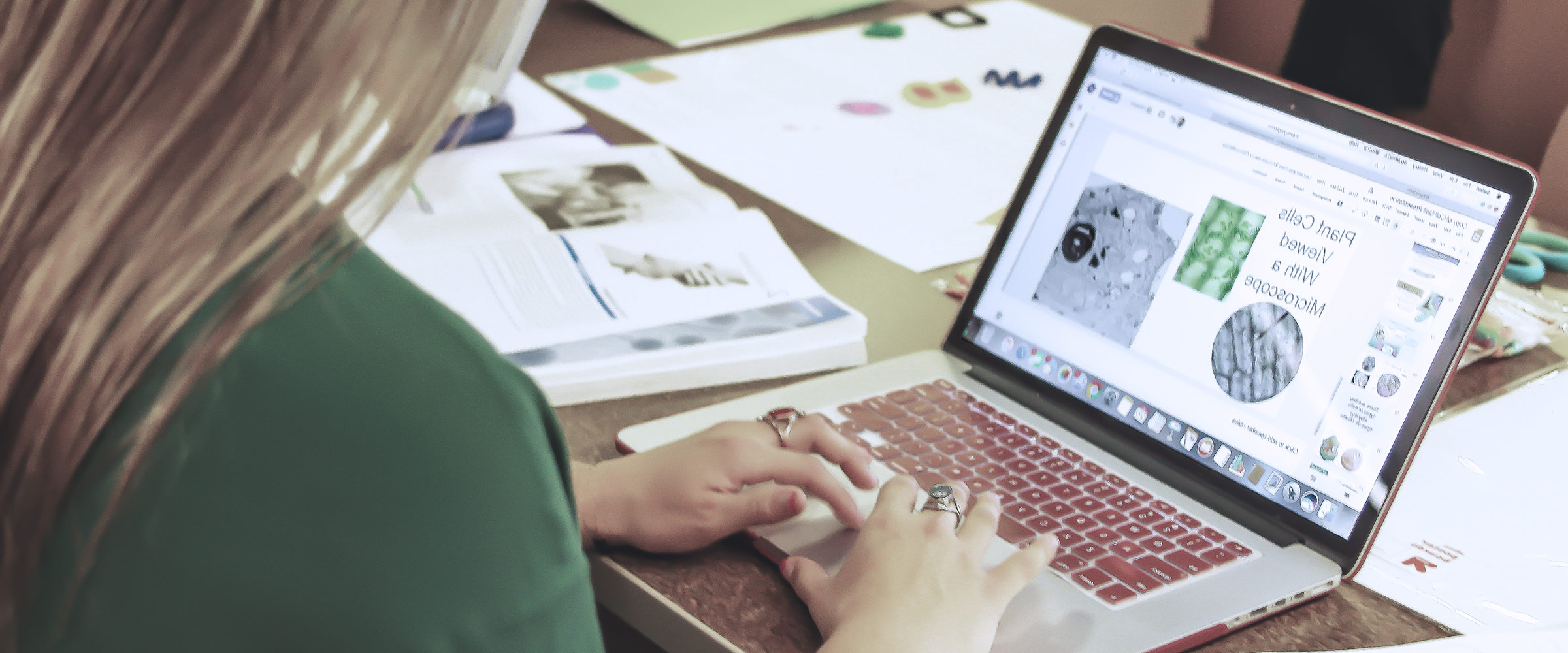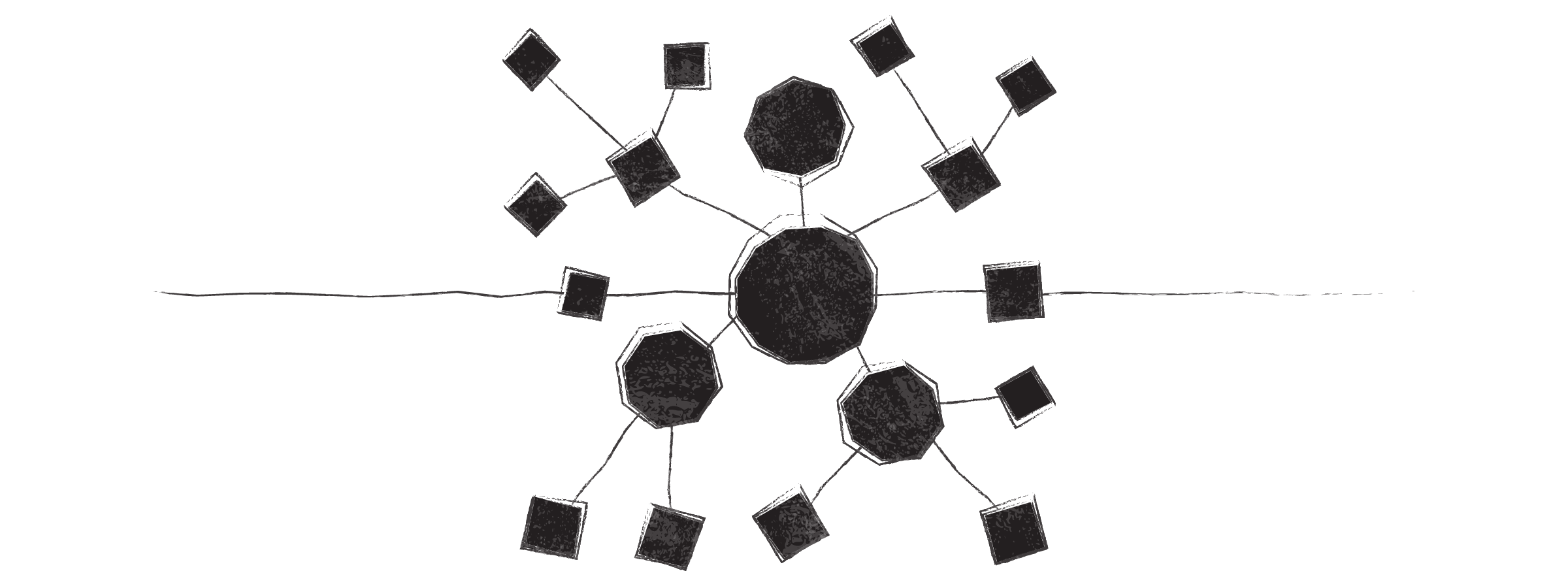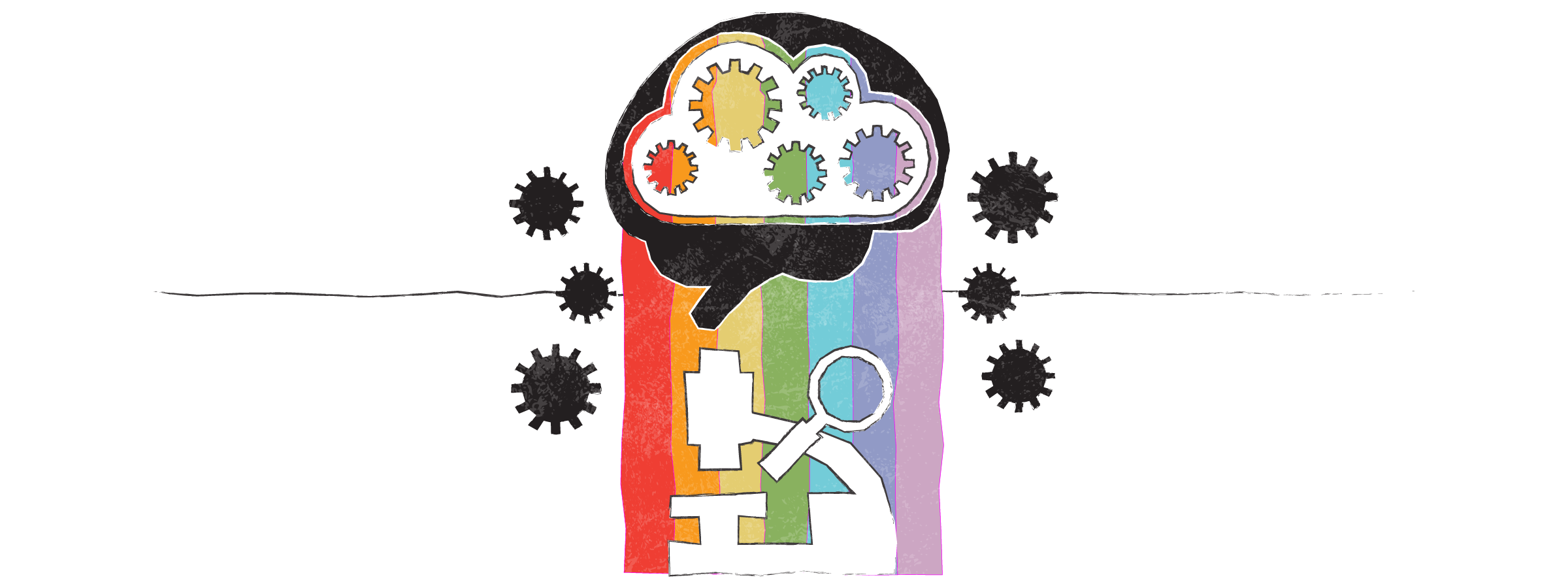Imagine a young woman. She is 22 and has just been diagnosed with autism. She immediately picks up her laptop and begins researching her diagnosis.

Fast-forward six months: she has immersed herself in a vibrant online community. She has discovered neurodiversity, the concept that there is no one ideal neurology. She has made connections with new friends. She has come to understand her challenges and gifts within the context of autism.
With these tools in hand, she finds the strength to look toward higher education. “What and who will I be?” she asks. She views the world as if it were the mouth of a shark: there is a spot for every tooth, and when one is lost, another fills the spot. There is a role, and someone will fill it.

She loves science. Now she loves autism, too. She decides she wants to research autism, but there’s one problem: in the autism community, “research” can be synonymous with “the cure,” and that’s a major problem indeed. Many autistic people don’t want to be cured. How will she proceed?
She considers what autistic people have said about “the cure.” It seems to revolve around the idea that autism is bad and must be removed from the individual. She wholly supports neurodiversity and figures that there must be room for scientific research within the context of the neurodiversity movement. She considers the real-life struggles of autistic adults, and finds that some of these issues are intersectional and could use more study as such.

She realizes that in order for autism researchers to meet the demands of the autistic population, they must disengage from the “little white boy” stereotype. “Where are the females?” she asks. “What happens to children who can’t access diagnosticians due to money, distance, or other factors? What resources are available to autistic adults? Why are ethnic minority populations so underrepresented? How do co-occuring conditions affect the way we treat autism? And is there a way to categorize and support individuals to more closely meet their needs?”
Eureka! She has found many questions which can be answered empirically. She did it by considering the needs of the whole autism population rather than demanding knowledge for why autism occurs in people. Now, she decides to break down these subpopulations by their needs.
Females are severely underrepresented and we don’t know why. The latest research suggests two main causes: a “social camouflage effect” in which females have fewer social deficits in early life, hiding them from diagnosis, and a “female protective effect,” which suggests that females need to have more genetic mutations than males in order to have traits that qualify for an autism diagnosis. In addition to empirically-identified causes, the autism community and many clinicians often insist that girls have subtle or alternative traits compared to males, warranting the development of a radically different diagnostic process. All three of these ideas are rich subjects for study.
Minorities also appear to make up a smaller-than-expected percentage of the autistic population, and some of the factors sound similar to possible female diagnostic-delay causes. For example, while research has suggested that Hispanics make up a smaller portion than expected, socioeconomic factors were ruled out as the only cause of this difference. Minorities are likely to be missed by the medical establishment due to a variety of factors, including misdiagnosis (particularly stigmatized diagnoses, such as emotional disturbance or childhood bipolar disorder), genetic protective factors, and cultural protections.
…there is much work to be done in this realm…
Poverty is a double-edged sword for autistic folk and their families. When families are in lower socioeconomic levels, they are far less likely to have health insurance and access to doctors. Their child may not have answers for many years. Even if a family enjoys higher economic status, the cost of therapies, medications, special diets for various gut and sensory disorders, and specialized equipment such as AAC devices can add up to hundreds of thousands of dollars during childhood. When they grow up, even the most independent people on the spectrum struggle finding employment and often face homelessness. Therefore, there is much work to be done in this realm to identify strategies for incorporating families and autistic adults into society with dignity and quality of life unbridled by incredible personal cost.
Autistic adults and nonverbal folk are often some of the most vulnerable due to a lack of resources that meet their needs. Technology has stepped in and transformed communication for many nonverbal autistic people in recent years. Additionally, fine motor deficits, sensory sensitivities, monitoring (oxygen levels, those who are likely to run from caregivers, etc.), and several other needs can be addressed or alleviated by technological advances. Meanwhile, virtually all spectrum adults are in desperate need of economic opportunity.
Our subject wonders if autistic people will pioneer their own live communities and services as they have on the internet.
From seizures to GI abnormalities and everything in between, autism is known for having many, many common co-occurring conditions. While classic autism is characterized by stimming, sensory sensitivities, and communication issues, there is extensive documentation of self-injurious behavior, respiratory problems, mental health conditions, allergies, eating disorders, and so on. Science needs a more accurate mapping of these conditions and how they are related to autism. Finding critical evidence concerning one co-occurring condition may very well lead to discoveries in others.

The gears are spinning. The young woman sees neurodiversity swallowing the whole world. She sees it as a magnificent thing. She thinks that someday it may be possible to map not just autism, but the human experience.
She takes a closer look at genetic research. Though autism has been historically defined by generic phenotypes, researchers are slowly unraveling genetic information and discovering the presence of hundreds or thousands of “autism subtypes” which are ripe for study and categorization. It is through this study that we may be able to personalize treatment for autistic individuals to better meet their needs and address co-occuring conditions. For example, a person with a genetic variant associated with a learning disability related to specific maladaptive pathways in the brain may be able to take a medication which reroutes the pathways, allowing for stronger conceptual understanding.
Our young woman spent a great deal of time researching these topics. She walks away from her computer, sure that she will be able to study many meaningful subjects. She knows some of her peers may continue to sneer at the idea of research, and she understands that it comes from a place of lived experience. She respects that, and hopes to change the world of autism to better meet the needs of exactly those people.
What would you research if given the opportunity? How would you change the world of autism to help those around you? Are you already working in the field or going to college? Let us know in the comments.





Hello Elinore,
This is a very thoughtful post. As a researcher who is also autistic (and has always taken an interest in anything psychology or neuroscience but who isn’t mathematically inclined) I have found various branches of psychology and educational psychology to be the right fit. My undergraduate project was very science-psychology based where my hypothesis had basis in biological theories. However in my Master’s I began exploring qualitative research (and the value of interviewing other autistic adults) and for my PhD I am utilizing all qualitative (grounded theory) to look at how classrooms in my city interpret and understand a children’s book I created to illustrate autism culture (is about the friendship of an autistic student and a new immigrant student). Basically I want to see how reading a piece like this impacts the attitudes and belief-systems of educators and students and develop a model to understand the processes (not cause and effect but meaning). I think neurodiversity and improving quality of life for autistics on all levels of the spectrum is an important area of research and I’m glad to see another individual pursuing this research. I also think in any early interventions with children who are autistic distinctions need to be made between diverse but harmless characteristics (e.g. hand flapping or lining up toys or fixation on a topic just as you would be expected to respect cultural ceremony and dress and not “whitewash” immigrants) and behaviors that are unsafe or create barriers(e.g. self harm, severe anxiety, aggression, inability to communicate needs to neurotypical people). Any therapies should be to teach adaptive skill (e.g. immigrants take English classes and have to follow safety standards of North America in their businesses) andnot be conversion therapy to make these people be somebody they are not.
Enjoy your journey into this, you will do great.
-Laura